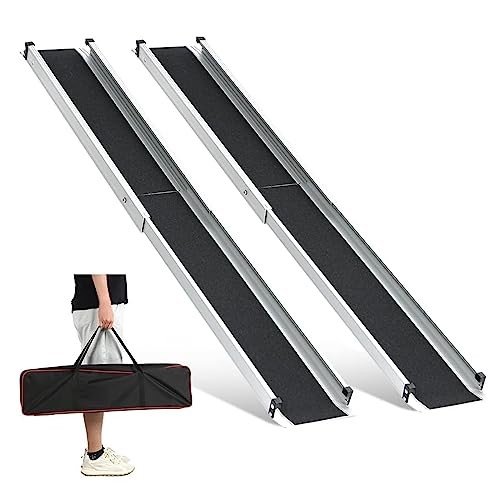
Wheelchair Ramps UK
Add a review FollowOverview
-
Founded Date August 11, 1925
-
Specializations Respite Care
-
Posted Jobs 0
-
Viewed 4
Company Description
15 Incredible Stats About Wheelchair Ramp
Understanding Wheelchair Ramps: Types, Benefits, and Guidelines

Intro
Wheelchair Access Ramp ramps play a crucial function in promoting ease of access and self-reliance for individuals with mobility difficulties. They provide a safe and effective methods of browsing spaces that might otherwise be expensive due to stairs or other barriers. In this guide, we will explore the numerous types of wheelchair ramps, the benefits of providing access, guidelines for setup, and resolve some frequently asked questions.
Kinds Of Wheelchair Ramps
There are several kinds of wheelchair ramps readily available, each fit for different environments and needs. Below is a table summarizing the main types of wheelchair ramps:
| Type of Ramp | Description | Ideal Use Cases | Pros | Cons |
|---|---|---|---|---|
| Portable Ramps | Light, easy to transport; often made from aluminum or plastic. | Temporary access for occasions or travel. | Easy to set up; versatile; lightweight. | Less stability; may not support heavy weights. |
| Limit Ramps | Low-profile ramps utilized for doorways or little obstacles. | Homes or commercial entries. | Easy to install; frequently adjustable. | Minimal height; not ideal for bigger barriers. |
| Modular Ramps | Pre-fabricated systems that can be customized; generally made from aluminum or steel. | Long-lasting access solutions. | Durable; can be customized to particular requirements. | Can be pricey; requires space for installation. |
| Concrete Ramps | Irreversible ramps normally made of poured concrete. | Public buildings and homes. | Highly stable; incorporated into the structure. | Time-consuming to install; tough to customize. |
| Folding Ramps | Compact and foldable ramps that can be kept easily. | For users requiring both mobility and capability. | Lightweight; hassle-free storage. | Smaller sized weight capacity; might require support. |
| Custom Ramps | Created specifically for user requirements, environment, and regulations. | Customized options based on particular circumstances. | Perfect fit for distinct requirements; highly functional. | Higher cost; longer planning and approval time. |
Benefits of Wheelchair Ramps
Investing in wheelchair ramps provides several advantages that extend beyond simple convenience:
- Accessibility: Ramps permit wheelchair users and those with mobility disabilities to access structures, homes, and outside spaces that may otherwise be restricted.
- Independence: Ramps foster self-reliance by making it possible for users to browse their environment without counting on help.
- Security: Ramps minimize the danger of accidents connected with stairs, especially in wet or icy conditions.
- Inclusivity: Providing wheelchair ramps reflects a dedication to inclusivity in both public and private settings, promoting equivalent opportunities for all people.
- Compliance: Many regions need ease of access functions in public areas; installing ramps can assist ensure compliance with local laws and policies.
- Enhanced Property Value: Homes and organizations that prioritize accessibility are often more appealing to potential buyers, boosting overall home worth.
Guidelines for Wheelchair Ramp Installation
When thinking about the installation of a wheelchair ramp, it’s necessary to follow particular guidelines to ensure security and functionality. Here are key factors to consider:
Ramp Specifications
- Slope: The perfect slope ratio for a wheelchair ramp is 1:12. This suggests that for every inch of elevation, there need to be at least 12 inches of ramp length.
- Width: A width of a minimum of 36 inches is suggested to accommodate most wheelchair users.
- Landing Area: Landing areas at the top and bottom of the ramp must be flat and at least 5 feet long to supply adequate turning area.
Materials
- Use resilient products that can stand up to wear, such as Aluminum Wheelchair Ramps For Homes, fiberglass, or pressure-treated wood.
- Ensure that the surface area offers traction to prevent slipping, specifically in wet conditions.
Security Features
- Incorporate handrails on both sides of the ramp, especially for inclines greater than 30 inches, to supply assistance.
- Install guardrails if the ramp height surpasses 30 inches.
- Routinely examine and maintain ramps to guarantee they are without particles and well-kept.
Often Asked Questions (FAQ)
1. What is the optimum length for a Portable Ramp For Wheelchair wheelchair ramp?
Portable ramps usually range from 2 feet to 10 feet in length, depending on the specific needs and weight capacity. Always check the producer’s guidelines.
2. How do I select the right slope for my ramp?
The basic guideline is a 1:12 slope. For every single inch of vertical rise, you require at least 12 inches of ramp length. Nevertheless, users with higher strength might manage steeper slopes.
3. Are there any legal policies concerning wheelchair ramps?
Yes, the Americans with Disabilities Act (ADA) supplies guidelines that need to be followed when constructing wheelchair ramps. Always inspect regional regulations, as requirements might differ.
4. How can I keep my wheelchair ramp?
Regular inspections for wear and tear, cleaning up the surface to get rid of particles, and ensuring that the handrails are safe are important parts of ramp maintenance.
5. Can I construct my own wheelchair ramp?
Yes, building a custom-made wheelchair ramp is possible, but it is important to follow safety guidelines and slopes as described previously. Consulting with experts or the local authorities can provide guidance.
Wheelchair ramps are a vital aspect of producing an accessible world for individuals with mobility obstacles. By comprehending the types offered, their advantages, and the essential standards for installation, we can add to a more inclusive society. Promoting for and executing these features not only enhances the lives of individuals who need them but also establishes environments where everybody can take part completely and relatively.
Investing in wheelchair ramps is a financial investment in dignity, safety, and independence– a step towards a more available future for all.
